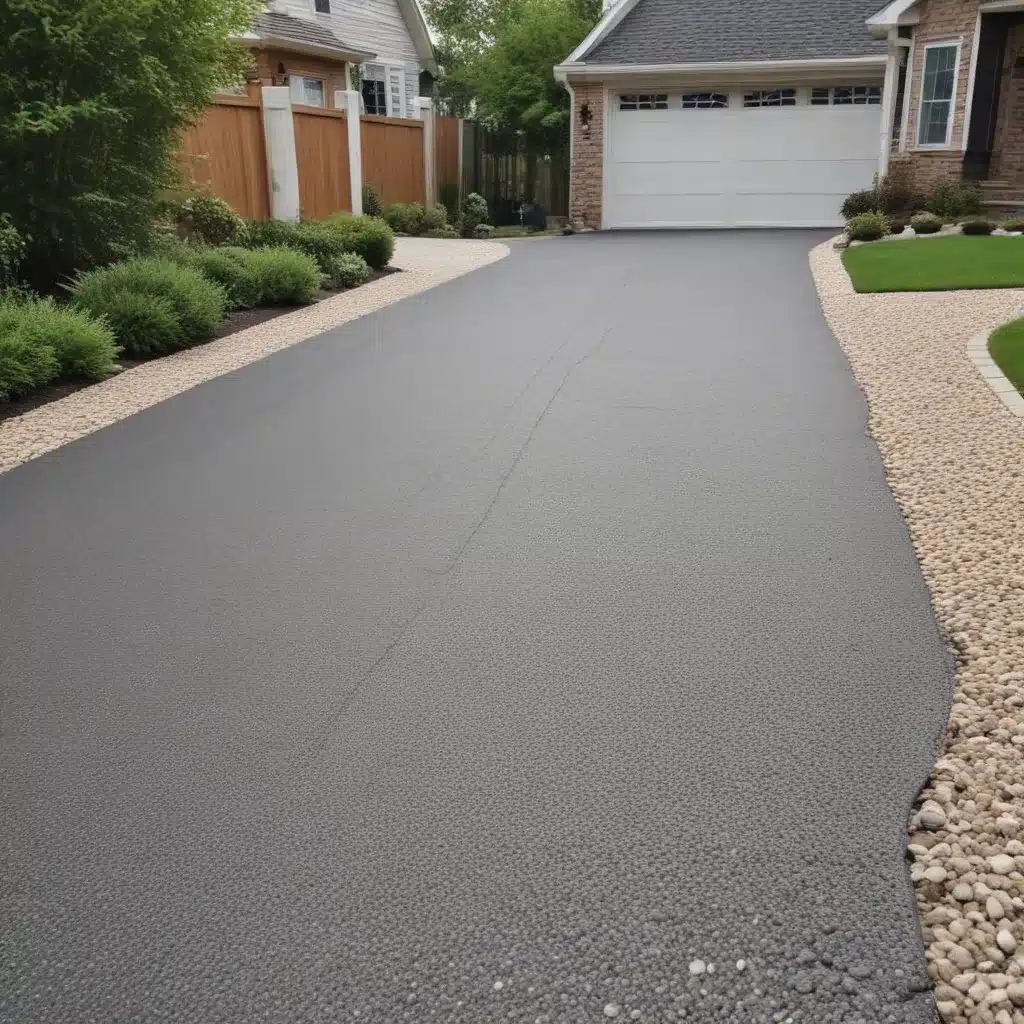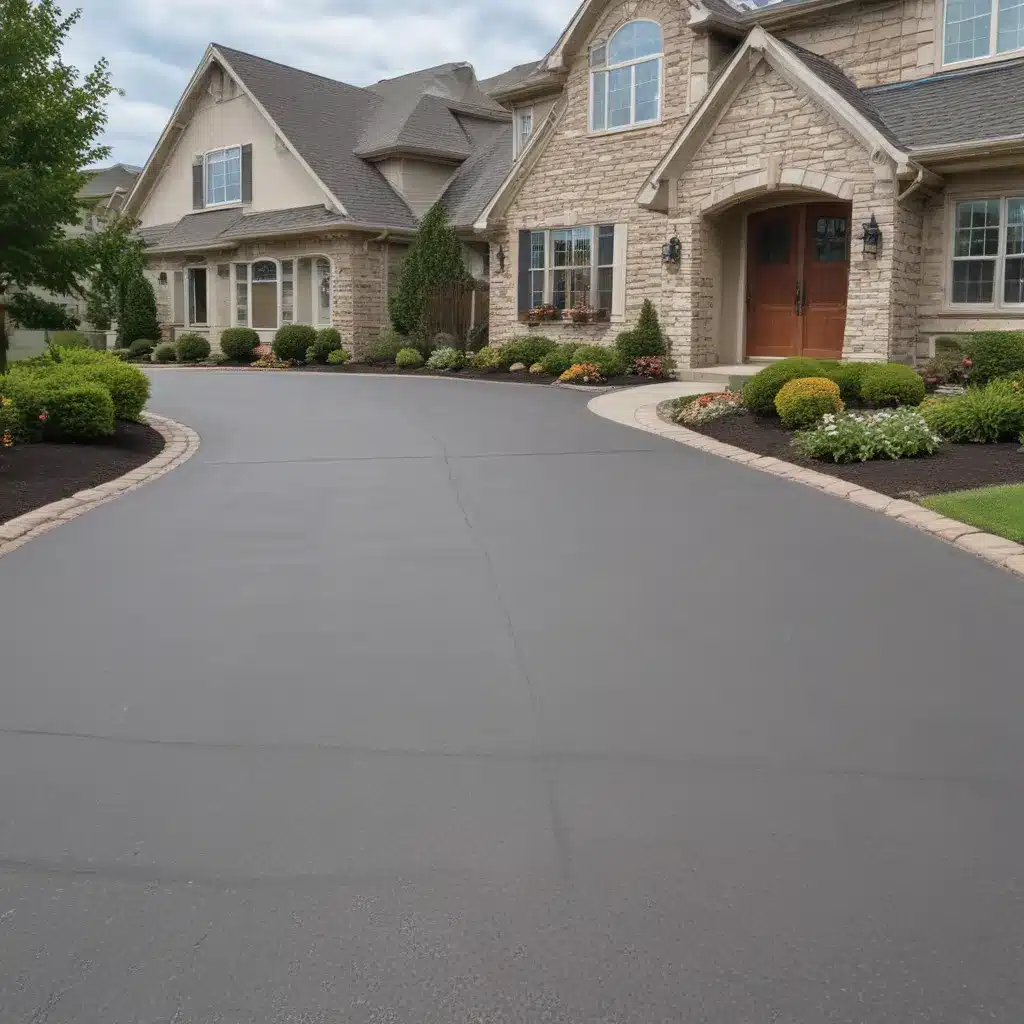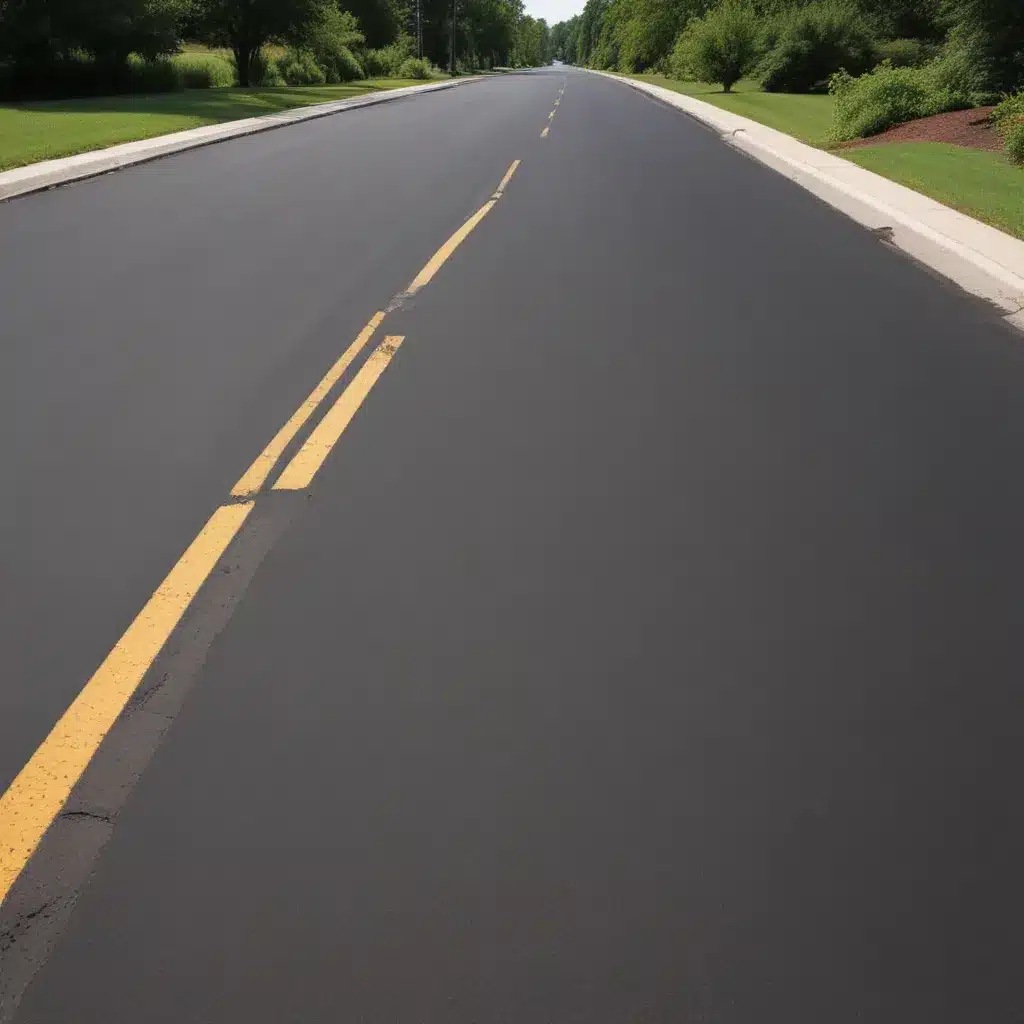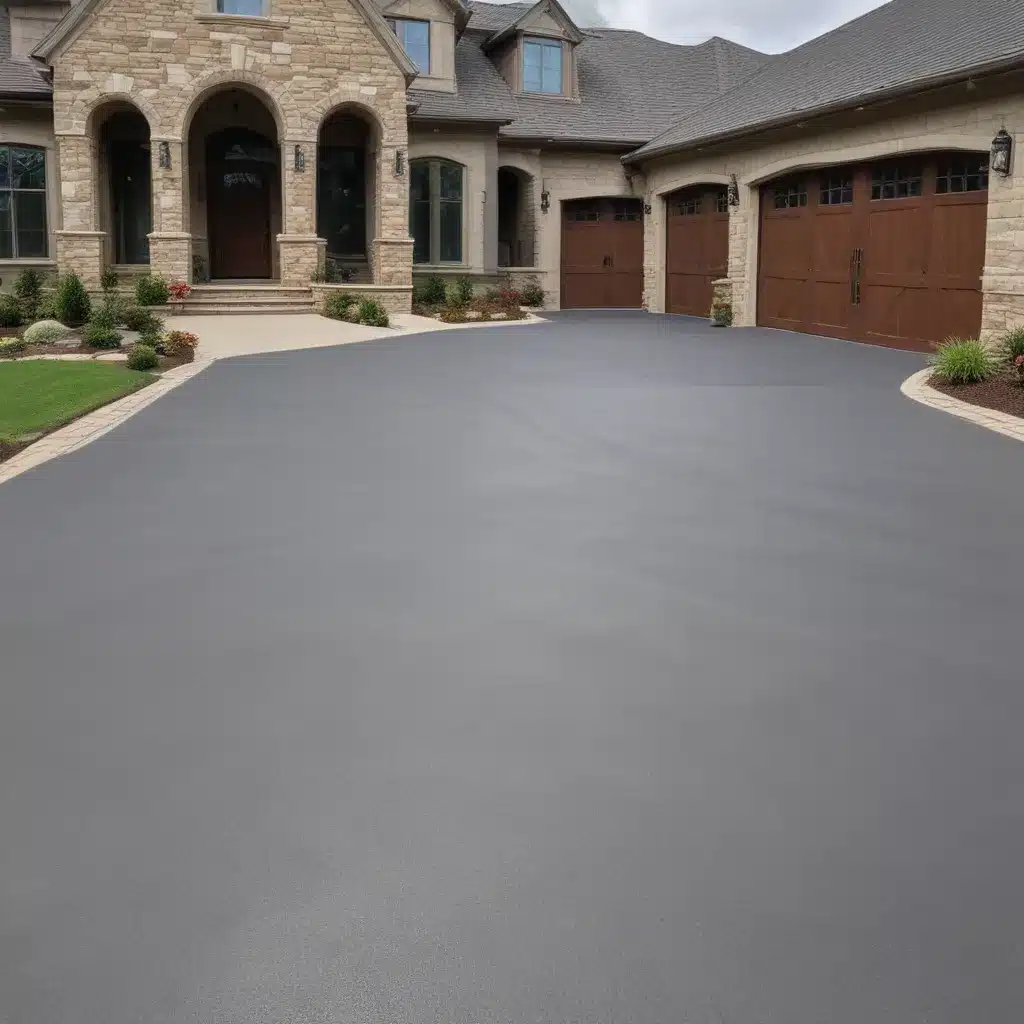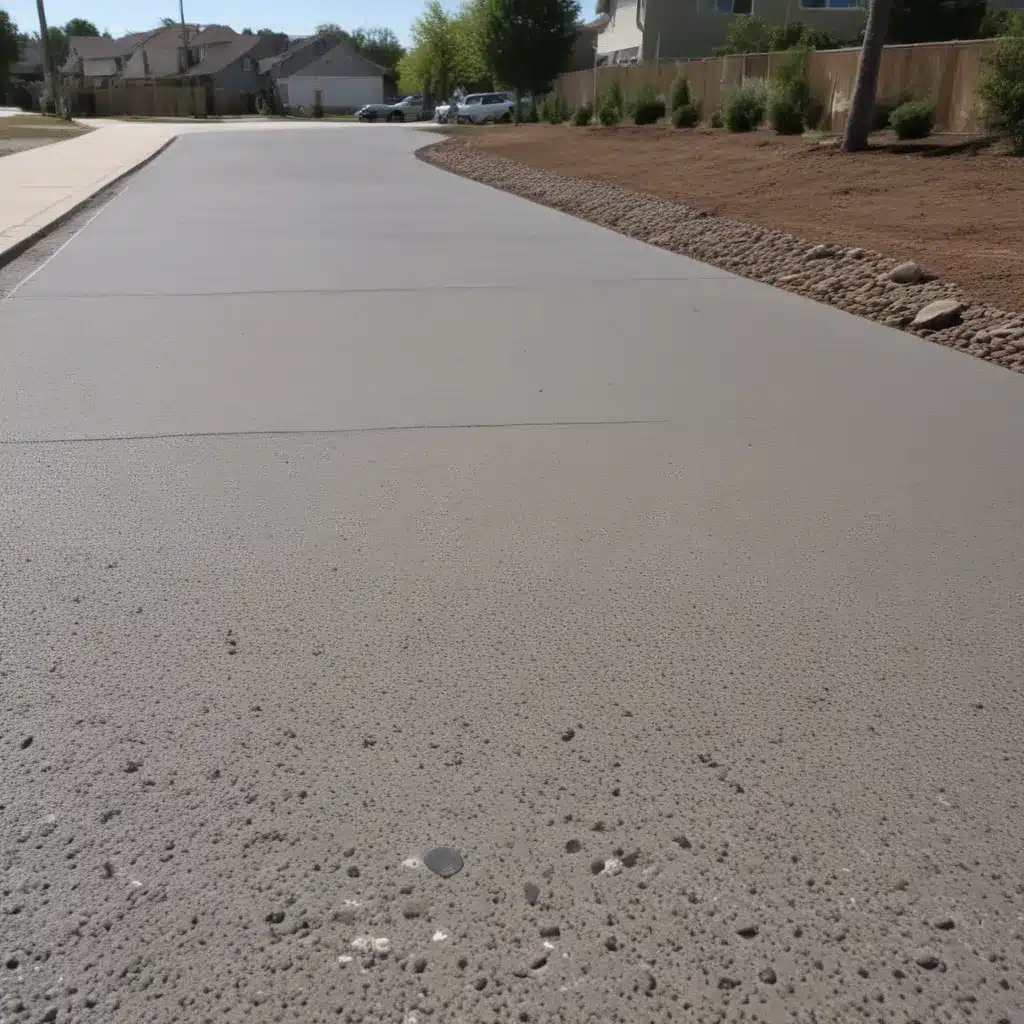The Gravel Advantage: Solving Drainage Woes
I’ve always been fascinated by the interplay between aesthetics and function when it comes to driveway design. And one material that has consistently caught my eye is gravel. Sure, it may not have the sleek, polished look of concrete or the timeless charm of cobblestones, but what gravel lacks in visual flair, it more than makes up for in its ability to tackle a common problem that plagues many homeowners: poor drainage.
You see, the porous nature of gravel allows water to easily permeate the surface, rather than pooling and creating unsightly puddles or, even worse, causing damage to your home’s foundation. This makes gravel an excellent choice for driveways in areas with heavy rainfall or where the soil is prone to waterlogging. In fact, I’ve seen firsthand how a well-designed gravel driveway can transform a once-soggy, muddy mess into a dry, functional, and visually-appealing entryway.
Gravel Driveway Drainage: The Science Behind the Solution
But how exactly does gravel achieve this drainage magic? Well, it all comes down to the way the individual stones are arranged and the spaces between them. These gaps, or “voids,” act as a natural drainage system, allowing water to filter through and be absorbed into the ground below. The larger the gravel size, the more pronounced these voids will be, and the more effective the drainage will be.
Of course, it’s not as simple as just dumping a truckload of gravel and calling it a day. The depth of the gravel layer, the quality of the underlying soil, and the overall slope of the driveway all play a crucial role in determining how well the drainage system will function. That’s why it’s so important to work with experienced driveway services professionals, like the team at NW Driveways, who can assess your specific site conditions and design a gravel driveway solution that addresses your unique drainage needs.
Gravel Driveway Maintenance: Keeping Your Drainage in Tip-Top Shape
Now, I know what you might be thinking: “Gravel sounds great, but doesn’t it require a lot of maintenance?” Well, I’m here to tell you that with a little bit of TLC, a gravel driveway can actually be easier to maintain than you might think.
The key is to regularly (say, once a year) top up the gravel layer, ensuring that the voids remain unobstructed and the drainage system continues to function at its best. This helps to prevent the buildup of debris, which can clog the pores and reduce the driveway’s permeability. And let’s not forget the aesthetics – a freshly-topped gravel driveway always looks so crisp and clean, don’t you think?
Of course, there are other maintenance tasks to consider, like clearing away leaves and twigs, and occasionally using a rake or broom to smooth out any uneven areas. But compared to the backbreaking work of shoveling snow or sealing cracks in a concrete driveway, these tasks are a walk in the park.
Gravel Driveway Versatility: Customizing for Your Needs
One of the things I love most about gravel driveways is their incredible versatility. Not only do they come in a wide range of colors and sizes to suit your aesthetic preferences, but they can also be customized to meet your specific needs.
For example, if you have a particularly steep driveway or one that’s prone to heavy runoff, you might consider using larger, more angular gravel to create a more stable, erosion-resistant surface. Or, if you’re looking to add a bit of visual interest, you could incorporate different types of gravel – perhaps a mix of white and grey stones, or even a sprinkling of decorative pebbles.
The possibilities are endless, and the team at NW Driveways is always happy to work with homeowners to create a truly one-of-a-kind driveway solution.
Gravel Driveway Performance: Real-World Success Stories
But enough about the theory – let’s talk about some real-world examples of how gravel driveways have transformed homes and solved drainage woes. Take the case of the Wilson family, for instance. Their old asphalt driveway had become a nightmare, with water pooling and creating dangerous icy patches during the winter months.
“We were at our wits’ end,” Mrs. Wilson told me. “We’d tried everything, from resurfacing to installing drainage pipes, but nothing seemed to work.” That is, until they contacted the NW Driveways team and opted for a gravel makeover.
“The difference was night and day,” Mrs. Wilson marvelled. “The water just disappears into the gravel, and we haven’t had any issues with flooding or ice since the new driveway was installed. It’s been a game-changer for us.”
And the Wilsons aren’t the only ones singing the praises of gravel driveways. I’ve heard similar stories from homeowners across the Warrington area, each one praising the material’s ability to solve their unique drainage challenges and transform their homes’ curb appeal.
Embracing the Gravel Difference
So, if you’re tired of battling Mother Nature’s watery wrath and you’re ready to take control of your driveway’s drainage, I’d highly recommend giving gravel a closer look. Sure, it may not be the flashiest option out there, but when it comes to functionality and long-term performance, gravel is truly in a league of its own.
And who knows, you might even find that you develop a newfound appreciation for the humble pebble – just like I have. After all, sometimes the most unassuming solutions can have the biggest impact. So why not let gravel work its magic and help you achieve your drainage goals?

